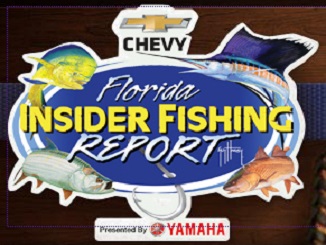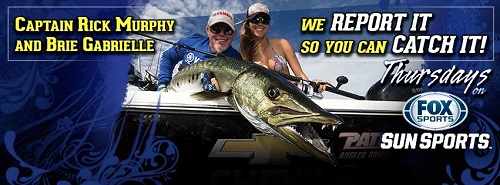 Bait is king in my region, mostly because with bait you’re not trying to trick or fool fish into believing what they are going to eat is real, it is real. And because it’s real, it acts and reacts like the real thing is supposed to, and also smells and tastes real, so when a fish eats it, it will hold onto the bait longer than it will a fly or lure.
Bait is king in my region, mostly because with bait you’re not trying to trick or fool fish into believing what they are going to eat is real, it is real. And because it’s real, it acts and reacts like the real thing is supposed to, and also smells and tastes real, so when a fish eats it, it will hold onto the bait longer than it will a fly or lure.
When it comes to catching bait in the Northwest Region, there’s just so many options. You want to tailor your options based on the fish you’re planning to target. For instance, most of the predatory gamefish will eat what we call whitebait (scaled sardines) or pilchards, or other members of the herring family like Spanish sardines or Atlantic Threadfins. Herring are some of the most common baitfish around, and can be fairly simple to catch using a good castnet and a little bit of chum.
In the lower part of the region, the bridges hold a lot of bait. There’s the Potter’s Pier, the Skyway Bridge and all the bridges in between the Gandy Bridge. The baitfish gather around the lights of these bridges at night, and can be caught using a castnet until the sun comes up and they scatter out towards the grass. At the Skyway Pier, you can even catch the bait after the sun comes up.
In the big waters like Tampa Bay and also out on the beaches, we’ll get big rafts of Threadfins and Sardines. They’ll also congregate around some of the marker buoys. If you’re not good with a castnet, or if it’s really deep, you can slide up with you boat and toss a Sabiki rig at them and catch bait using hook and line. Sabiki rigs are these six hook rigs with fish skin on them that look like little minnows. You put a two or three ounce weight on the bottom and that keeps the baits from tangling in the rig when they get hooked. You toss it into the school and jig it slowly up and down. When you hook a bait, you just reel it back slowly and more baits will follow and eat the hooks and get hooked. Sometimes you’ll bring the rig in and there will be a bait on every hook.
Oncee the sun comes up, the baitfish scatter to the flats, and you have to use chum to draw them in close to the boat. The chum we use is a mixture of canned Jack Mackerel and Purina 38% Tropical Fish Food. Mix it all together, and then anchor up on the flats in an area with good current and grass and start tossing little bits over the side until you get a nice slick behind the boat. As the baitfish show up, you’ll see them dimpling the surface behind the boat. Toss a golf ball size ball of chum, load the net and throw. Then do it again. After several throws, you’ll have enough bait to fish an entire day.

Pinfish are another great bait that a lot of inshore and offshore species will eat. You can catch them using a pinfish trap and squid for bait, or on hook and line. A lot of time they chum in when you’re catching whitebait, and you’ll catch 20 or 30 pinfish as incidental catches when catching the herrings.
For castnets, I like to throw a 12 foot 3/8 inch stretch that is super heavy. It’ll have 22 to 25 pounds of weight so it sinks quickly before the baitfish can swim out from underneath it. If the bait is large threadfins, you can throw a 5/8 inch stretch net. On the flats, I throw a 10 to 12 foot 1/4 to 3/8 inch stretch net on the flats, and it doesn’t have to be very heavy, since the water isn’t very deep.
A great bait for tarpon, cobia, permit and mutton snapper are live crabs. You can catch those from five days before until four days after the new and full moons. We catch them around the passes and bridges on the outgoing tide in the afternoon and evenings. You can just motor along with your boat with a long-handled small-mesh net and dip them off the surface. Then you can declaw them if you want.
Once you get bait, you want to make sure you don’t overcrowd the livewell capacity. Most livewell systems introduce a limited amount of oxygen and can only hold so many baits. You’ll know if you’ve overcrowded it if you look in the livewell and all the baits are on the surface gasping for air. If that happens, you need to toss some baits over, or put them in another well, because if you don’t all the oxygen will get depleted and all the baits will die.
Once you’ve caught bait, then you can decide on where you want to fish and what to target. A lot of times, the baits we catch determine where we fish. From there, it’s up to the fish to make it an exciting day on the water.
